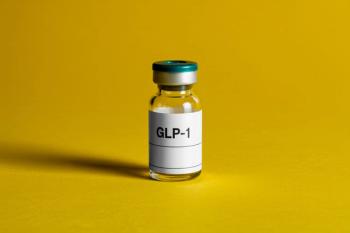
CBT a Viable Treatment for Children With OCD and Hoarding Symptoms
New research shows that cognitive-behavioral therapy is helpful in treating OCD symptoms in children and considers cognitive development and the heterogeneous presentation of hoarding symptoms.
RESEARCH UPDATE
New
Youths with OCD who also had symptoms of hoarding were more likely to have other psychiatric diagnoses than patients who did not hoard (1.5 vs 0.78). Symptom severity in patients with or without OCD did not differ. Additionally, youth were just as likely to benefit from CBT for OCD whether or not they also had hoarding symptoms (50% versus 60% rated as treatment responders).
Lead author Michelle Rozenman, PhD,2 Assistant Professor at the University of Denver, Denver, CO, and Adjunct Assistant Professor at the UCLA Semel Institute for Neuroscience & Human Behavior, Los Angeles, CA, said in a
According to Dr Rozenman, who has transitioned to a primary faculty appointment at the University of Denver (DU) Department of Psychology and is Director of the DU
Pediatric versus adult hoarding
In adults, symptoms of HD often worsen over the years with or without CBT, as patients become socially isolated, experience relationship problems, and even risk injury or death due to hazards posed by the collection of items over a period of decades. “Our data are in contrast to data from studies that suggest poorer CBT treatment response for adults who hoard. Clinicians should assess for hoarding in their pediatric OCD patients in order to address these symptoms prior to adulthood when symptoms may worsen and interfere with an individual’s functioning,” says Dr Rozenman.
Two core features of hoarding in adults include excessive acquisition of items and persistent difficulty discarding items, regardless of their actual value.3 “As youth often do not have full control over their environment,” says Rozenman, “and do not have financial independence, they may not appear to be as functionally impaired. Youth with hoarding symptoms often attempt to hoard items to which they have access in their environment that they can obtain for free and/or without their parents’ permission.” Those items may include sticks, rocks, toys, old, small clothes, and wrappers.
“Younger children in particular may become very upset when items are discarded or when a parent does not permit them to bring an acquired item into the home,” she says. Children may also attempt to conceal their items from parents. For example, they may stuff items in drawers, closets, and other places in the home.
Rozenman adds, “Some youth will describe their desire to acquire or inability to discard items with an explanation or rationale. For example, some young patients will not want to discard old clothes, toys, cards, and other items because they associate those objects with a person or time in their life that was particularly fun or pleasant. That item may relate to a birthday party or present.” She adds, “Others may believe that the items would be lonely or have hurt feelings if discarded. Yet others may want to keep objects because the objects look interesting or special, such as rocks shaped in a particular way, sparkly wrappers or papers, and so forth.”
Clinical considerations
It is important to consider cognitive development and the heterogeneous presentation of hoarding symptoms before assuming that the child has unusual thoughts (eg, as in psychotic disorders). “Some youth, likely adolescents, may recognize that these thoughts are irrational and can intellectually understand that objects do not have feelings or that they want to keep items that they will never use again, and be able to describe how their intellectual understanding differs from their emotional experience,” says Rozenman. “Other patients, particularly younger children may truly believe that objects have feelings.”
Finally, it is important to distinguish between having a single collection (eg, baseball cards) or wanting to save a single “special item” (eg, favorite stuffed toy) from hoarding symptoms.
Resources
“Consultation with experts in pediatric hoarding may be helpful for those who do not have prior experiences in this area,” Dr Rozenman reported to Psychiatric Times. The
This study appears in the Journal of the American Academy of Child & Adolescent Psychiatry (JAACAP), published by Elsevier. For more on this topic,
References:
1. Presence of hoarding symptoms does not negatively impact cognitive behavioral therapy response in youth with OCD. Elsevier. July 23, 2019 [Press release].
2. Rozenman M, McGuire J, Wu M, et al.
3. American Psychiatric Association. Diagnostic and Statistical Manual of Mental Disorders. 5th ed. Arlington, VA: American Psychiatric Publishing; 2013.
4. Practice parameter for the assessment and treatment of children and adolescents with obsessive-compulsive disorder. J Am Acad Child Adolesc Psychiatry. 2012;51:98-113.
Newsletter
Receive trusted psychiatric news, expert analysis, and clinical insights — subscribe today to support your practice and your patients.

















